A crazy good brisket, and the only thing to do with dried onion soup mix.
-Full Post-

Preheat oven to 350 degrees F. In a large roasting pan over medium high heat, brown the brisket on all sides in 2T of the oil, about 3-4 minutes per side. Remove the meat to a plate, add the extra 1 T of oil and saute the diced onions until translucent, another 3-4 minutes. Stir the tablespoon of paprika into the onions and cook another minute or two. Deglaze the pan with 1/2 cup of the wine.
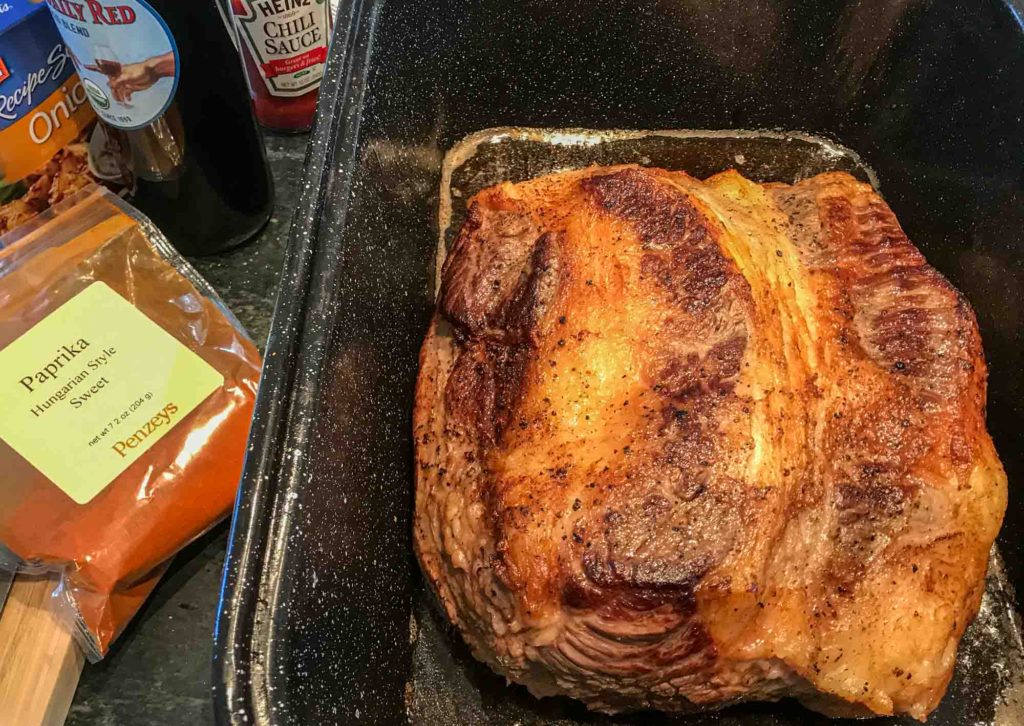
Add the rest of the wine, the chili sauce, onion soup packets, and any accumulated meat juices to the roasting pan and bring to a simmer. Add the meat, fatty side up, and spoon the sauce over all. Cover the pan tightly with foil and bake for 2 hours. Check and baste after the first hour.
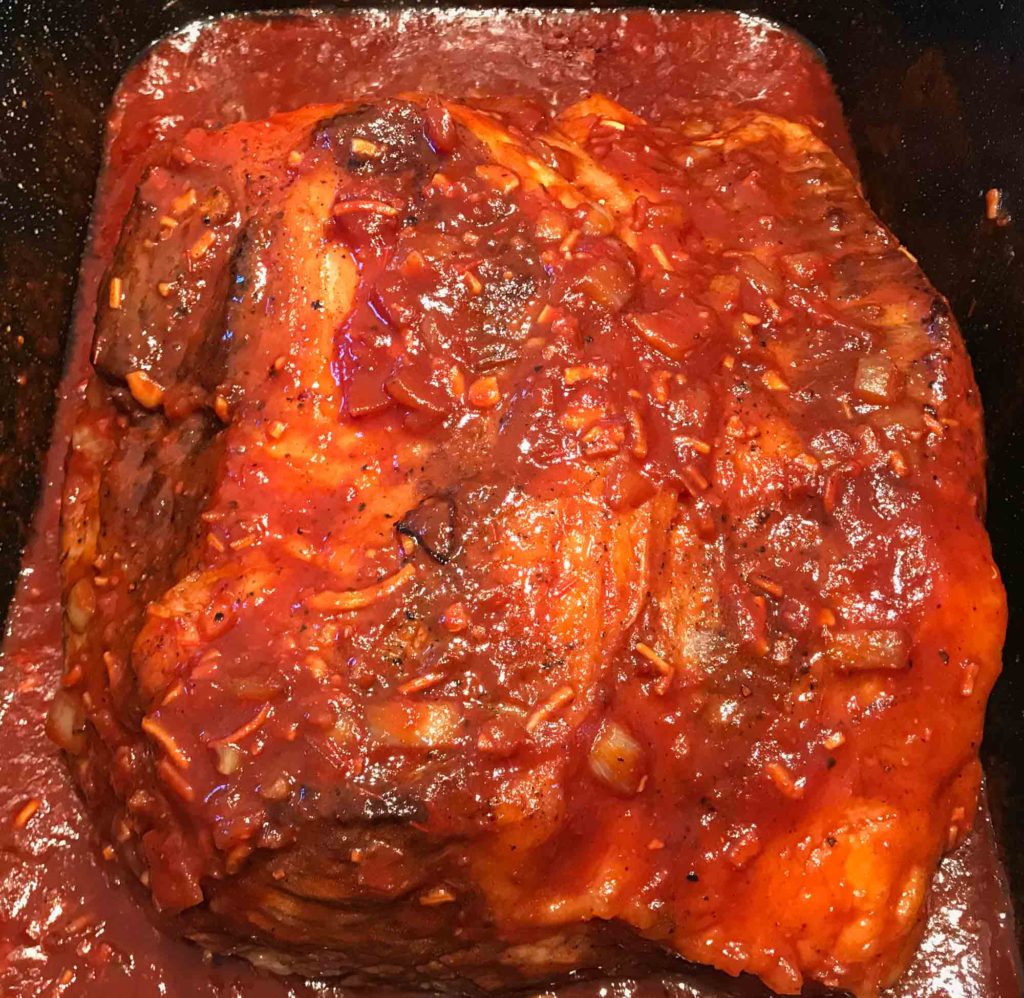
Remove the pan from the oven, and the meat from the pan. Pour all the juices from the pan into a bowl or medium saucepan. This is a good time to let things rest. Spoon off the accumulated oil from the sauce and, optionally, puree the sauce with a stick blender or in a regular blender, once it has cooled a bit.
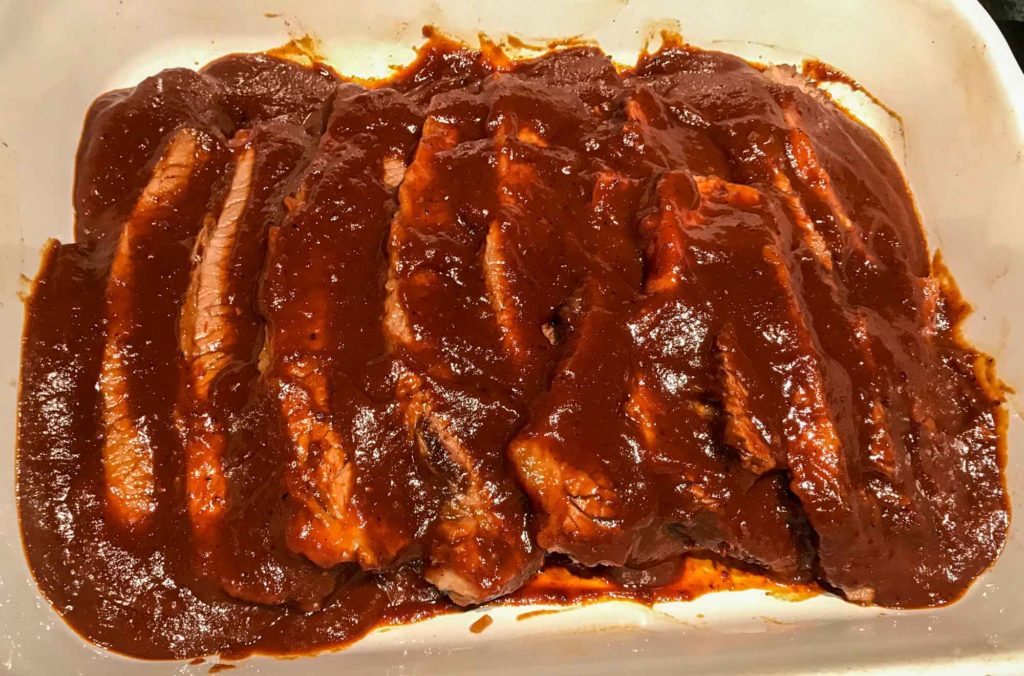
Slice the meat against the grain into thickish slices, trimming excess fat as you go. Layer overlapping slices into a baking dish. Cover the meat generously with sauce, seal the pan tightly with foil, and bake for another hour at 350, checking after a half hour to make sure the sauce is not burning onto the pan - add a bit of hot water and lower the heat to 325 for the last half hour, if you need to. Let cool a few minutes and serve from the pan.
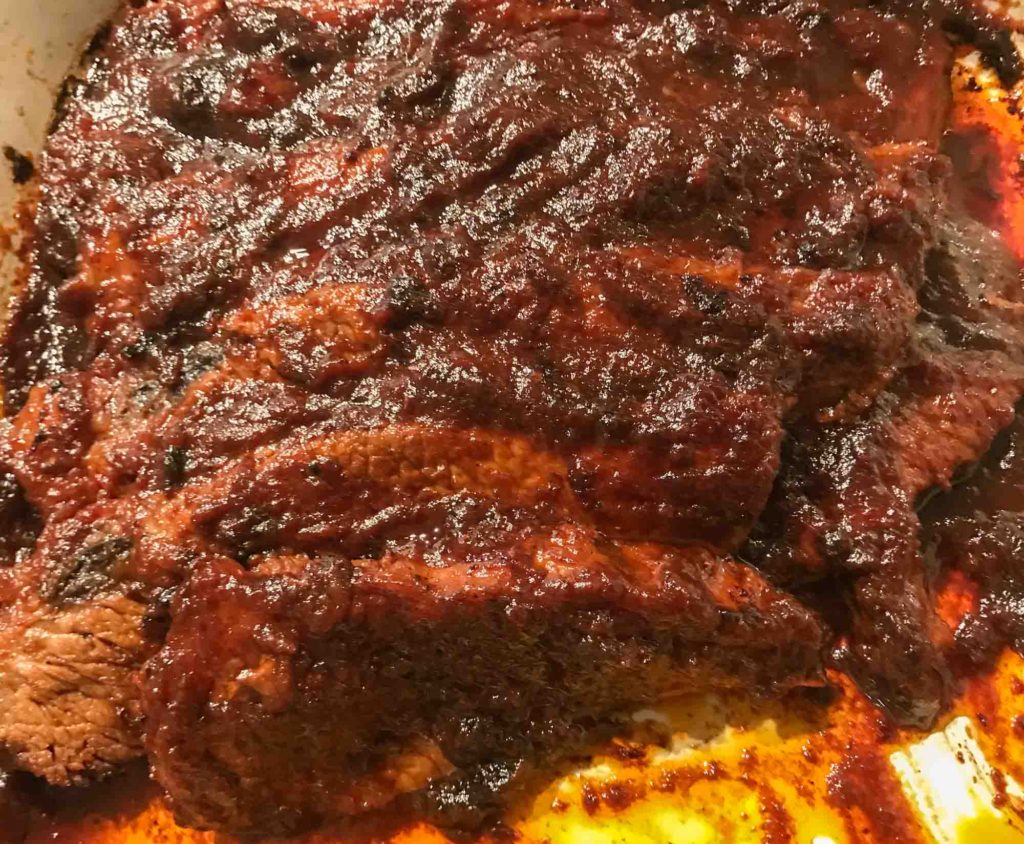
This is a simple, favorite recipe, but there are a few things to think about. You might as well make as much brisket as you have pan, as leftovers will be even better than the original meal. If I'm dealing with a butcher, I'll ask directly for 14" of meat starting at the flat end, if that's what the pan will hold. A snug fit is nice; it will keep the sauce up high around the brisket.
Trust me, if you use the paprika and a nice red wine, it will not taste like onion dip. It may start out with that characteristic toasted onion smell, but will soon mellow out in the oven.
After the initial two-hour bake, it's good to plan for a break before the final slicing and baking. You can scrape up all the sauce and put it in the fridge or freezer to help separate out the fat. It's also easier to slice the meat after it's cooled a bit. Brisket is fatty at the point end, and it's nice to have time to remove big streaks of fat before serving to your family and friends, per your desire. You can even get the slices set up in the baking pan and refrigerate them for a day or two before continuing.
Blending the sauce after defatting is highly recommended.
The idea with the slicing and final bake is to wind up with nice, coherent slices that are both fork tender and infused with sauce. If you bake this for 3 or 4 hours in one piece, it will be tender, alright, but it will also tend to fall apart as you cut it.
Pro tip: butchers usually trim off the exterior of the brisket and save the fat for ground beef, but don't touch the interior. If your brisket has large chunks of internal fat on the thick (aka point) end, you can slice out a clean 80% or so, leaving a thin layer as well as a pocket to spread extra seasoning. Freeze the fat and use later for your own hamburgers or meatballs.
We often actually make this in two phases, buying as much brisket as will fit, cooking it whole, then saving about half of it (with half the sauce of course) to slice and bake up a few days later. This is the kind of meal you want to relive.
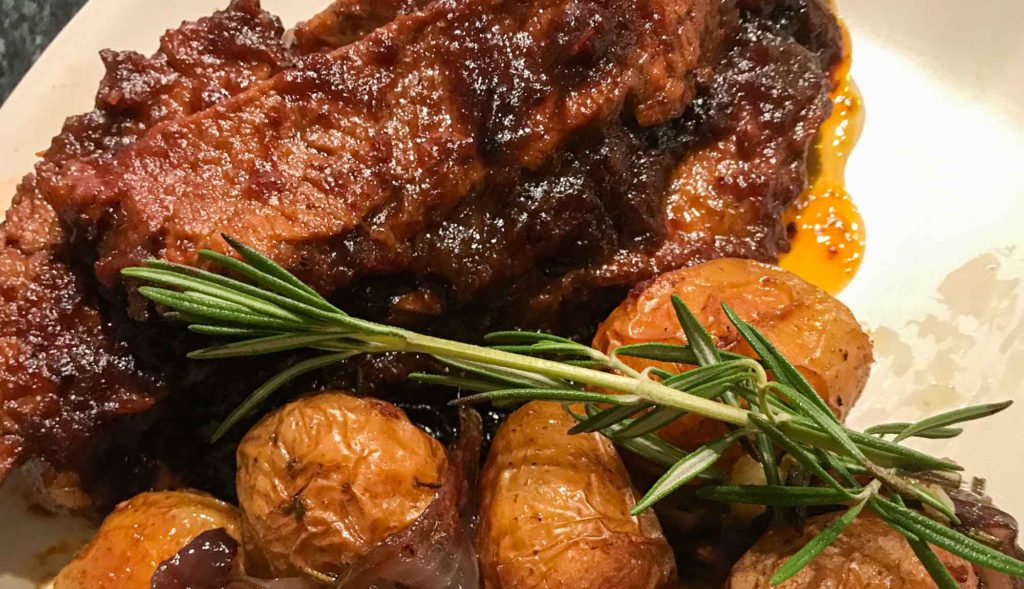
Ingredients
Directions
Preheat oven to 350 degrees F. In a large roasting pan over medium high heat, brown the brisket on all sides in 2T of the oil, about 3-4 minutes per side. Remove the meat to a plate, add the extra 1 T of oil and saute the diced onions until translucent, another 3-4 minutes. Stir the tablespoon of paprika into the onions and cook another minute or two. Deglaze the pan with 1/2 cup of the wine.

Add the rest of the wine, the chili sauce, onion soup packets, and any accumulated meat juices to the roasting pan and bring to a simmer. Add the meat, fatty side up, and spoon the sauce over all. Cover the pan tightly with foil and bake for 2 hours. Check and baste after the first hour.

Remove the pan from the oven, and the meat from the pan. Pour all the juices from the pan into a bowl or medium saucepan. This is a good time to let things rest. Spoon off the accumulated oil from the sauce and, optionally, puree the sauce with a stick blender or in a regular blender, once it has cooled a bit.

Slice the meat against the grain into thickish slices, trimming excess fat as you go. Layer overlapping slices into a baking dish. Cover the meat generously with sauce, seal the pan tightly with foil, and bake for another hour at 350, checking after a half hour to make sure the sauce is not burning onto the pan - add a bit of hot water and lower the heat to 325 for the last half hour, if you need to. Let cool a few minutes and serve from the pan.

This is a simple, favorite recipe, but there are a few things to think about. You might as well make as much brisket as you have pan, as leftovers will be even better than the original meal. If I'm dealing with a butcher, I'll ask directly for 14" of meat starting at the flat end, if that's what the pan will hold. A snug fit is nice; it will keep the sauce up high around the brisket.
Trust me, if you use the paprika and a nice red wine, it will not taste like onion dip. It may start out with that characteristic toasted onion smell, but will soon mellow out in the oven.
After the initial two-hour bake, it's good to plan for a break before the final slicing and baking. You can scrape up all the sauce and put it in the fridge or freezer to help separate out the fat. It's also easier to slice the meat after it's cooled a bit. Brisket is fatty at the point end, and it's nice to have time to remove big streaks of fat before serving to your family and friends, per your desire. You can even get the slices set up in the baking pan and refrigerate them for a day or two before continuing.
Blending the sauce after defatting is highly recommended.
The idea with the slicing and final bake is to wind up with nice, coherent slices that are both fork tender and infused with sauce. If you bake this for 3 or 4 hours in one piece, it will be tender, alright, but it will also tend to fall apart as you cut it.
Pro tip: butchers usually trim off the exterior of the brisket and save the fat for ground beef, but don't touch the interior. If your brisket has large chunks of internal fat on the thick (aka point) end, you can slice out a clean 80% or so, leaving a thin layer as well as a pocket to spread extra seasoning. Freeze the fat and use later for your own hamburgers or meatballs.
We often actually make this in two phases, buying as much brisket as will fit, cooking it whole, then saving about half of it (with half the sauce of course) to slice and bake up a few days later. This is the kind of meal you want to relive.


Leave a Reply